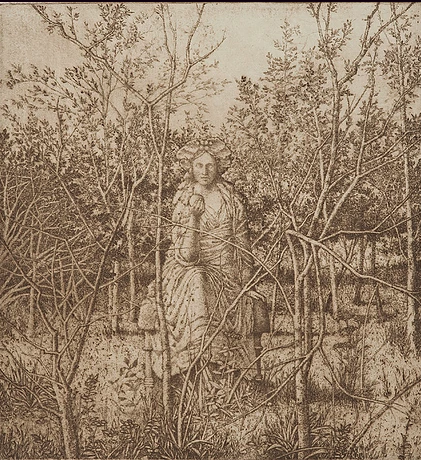Mythic landscapes

From Matt Klos, of Exeter Gallery, in Baltimore, on the gallery’s current show:
Accidents of TimeMagnolia Laurie & Gillian Pederson-Krag
January 11th – February 28th
Magnolia Laurie’s paintings and Gillian Pederson-Krag’s prints present landscapes that feel immutable. The landscapes are poetic and, at times disquieting. Often monochromatic, and grand even at a small scale, each work possesses a profound stillness. Magnolia presents paintings on panel excepting two large oils on canvas. Each panel features subtle washes which form reticulated edges where the puddles of pigment end. The fine networks at these perimeters form distant blurred treetop canopies or the appearance of pulled cotton where clouds give way to sky. Her paintings feature volcanic mountains, scorched earth, and in “To Weight it Down” a forested space with what could be police tape cordoning off a crime scene. This is what remains after the cataclysmic event. Nature remembers the action lest we forget. Gillian makes meticulously crafted etchings. These dense and expertly arranged tangles of linework describe landscapes of bare tree branches, rivers, and ruins. Thin filaments run behind thicker ones creating a deep quiet space. In an amber toned etching a statue of Persephone sits with one leg crossed over the other holding a fruit amongst an overgrown thicket. She presents bounty from nature as nature itself threatens to overtake her. Many of these landscapes bear the mark of humankind. Human elements create the formal structure which carries one’s eye throughout the scene.
In Laurie’s works towers and fences serve as this device while in Pederson-Krag’s ruins and weathered statues are featured. Our affect on nature is front and center in current scientific and political conversations. If a monomyth is present here perhaps it reveals that our striving, our monuments, our self-importance, and our collective self, will eventually pass away. The landscape of tomorrow will contain our ashes and dust. “The happy ending of the fairy tale, the myth, and the divine comedy of the soul, is to be read, not as contradiction, but as a transcendence of the universal tragedy of man. The objective world remains what it was, but, because of a shift of emphasis within the subject, is beheld as though transformed. Where formerly life and death contended, now enduring being is made manifest – as indifferent to the accidents of time as water boiling in a pot is to the destiny of the bubble, or as the cosmos to the appearance and disappearance of a galaxy of stars.” – Joseph Campbell, The Hero with a Thousand Faces, pg. 28
Comments are currently closed.